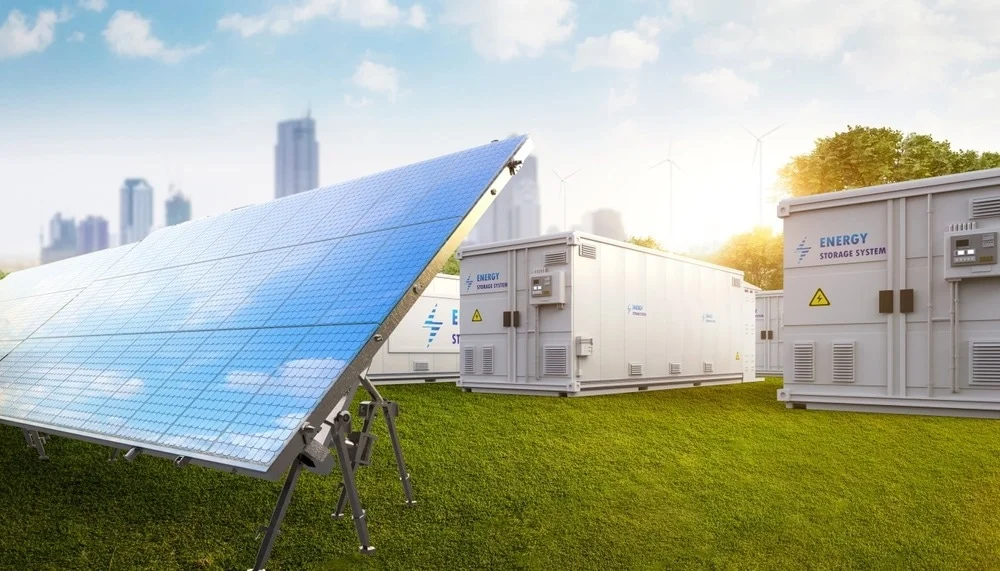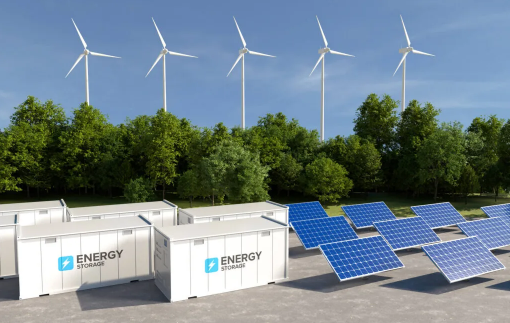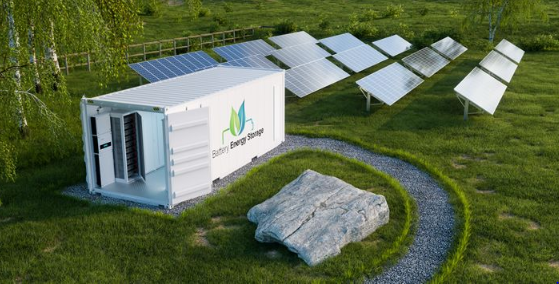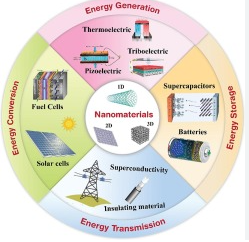Advancements in Solar Battery Storage: Improving Energy Retention and Efficiency
 Venkata Narsareddy Annapareddy
Venkata Narsareddy Annapareddy
The world is transitioning toward renewable energy sources, with solar power at the forefront of this global shift. Solar energy provides a sustainable, clean, and abundant power source, but its reliance on sunlight means that energy generation is intermittent, with fluctuations based on time of day, weather, and seasons. To make solar energy more viable and efficient, solar battery storage systems have become increasingly crucial. These systems store excess energy produced during sunny periods for later use, allowing for a more consistent and reliable power supply. However, traditional solar battery technology has limitations in terms of efficiency, capacity, and cost. In recent years, significant advancements in solar battery storage have addressed these challenges, improving energy retention and efficiency.
Understanding Solar Battery Storage Systems
A solar battery storage system allows homeowners, businesses, or utilities to store energy generated by solar panels during periods of sunlight. This stored energy can be used when the sun isn’t shining, ensuring a continuous and uninterrupted power supply. The batteries act as an intermediary between the solar panels and the home’s or business’s electrical system. When the solar panels generate excess energy, it is sent to the batteries rather than being wasted or sent back to the grid. At night or during cloudy weather, the stored energy can be drawn from the batteries to power the building.
Several types of batteries are used in solar storage systems, including lead-acid, lithium-ion, flow, and saltwater batteries. Each has its advantages and drawbacks in terms of cost, energy efficiency, lifespan, and environmental impact.

Challenges in Solar Battery Storage
While solar energy has tremendous potential, the main challenge lies in energy storage. Solar power generation peaks during the day but is less available at night or on cloudy days. Storing this energy efficiently for later use requires advanced battery technology. Early battery systems were often large, inefficient, and expensive. Even as technology has improved, there are still several hurdles to overcome:
Energy Loss During Storage: Not all the energy that is stored in a battery is retrievable. Some energy is lost during the process of charging and discharging the battery. This loss of energy, known as round-trip efficiency, can reduce the overall effectiveness of the storage system.
Capacity Limitations: Many solar battery systems struggle to store enough energy to meet the needs of larger homes or businesses. A lack of adequate capacity means that users might still rely on grid electricity during periods of high demand.
High Costs: The cost of battery storage systems, especially those that use newer technologies like lithium-ion, can be prohibitively expensive. For many, the high upfront costs of installation make it difficult to justify adopting solar battery storage, even if the long-term savings are significant.
Lifespan and Durability: Batteries have a finite lifespan, and over time, their ability to hold charge diminishes. This can lead to additional maintenance costs or the need to replace the battery earlier than expected.
EQ.1: Energy Retention Efficiency (Round-trip Efficiency)

Recent Advancements in Solar Battery Storage Technology
To overcome these challenges, researchers and companies are investing heavily in developing more efficient, cost-effective, and durable solar battery storage systems. Some of the most promising advancements include:
- Improved Lithium-Ion Batteries
Lithium-ion batteries are currently the most widely used type of battery in solar storage systems. They offer a relatively high energy density, which allows them to store more energy in a smaller, lighter package. Additionally, lithium-ion batteries have a longer lifespan and better round-trip efficiency compared to older technologies like lead-acid batteries.
However, as demand for solar energy storage has grown, researchers have focused on improving lithium-ion technology even further. Some of the advancements include:
Solid-State Batteries: Solid-state lithium-ion batteries replace the liquid electrolyte with a solid electrolyte, which reduces the risk of fires and increases energy density. Solid-state batteries also offer higher efficiency and longer lifespans, which can significantly reduce the cost of storage over time.
Silicon Anode Batteries: Traditional lithium-ion batteries use graphite anodes, but some manufacturers are exploring the use of silicon in the anode, which can increase energy density. By using silicon, batteries can store more energy and potentially reduce the size and cost of storage systems.

- Flow Batteries
Flow batteries represent a promising alternative to traditional lithium-ion technology. These batteries use liquid electrolytes stored in external tanks, which flow through the system to generate electricity. Flow batteries are scalable, meaning that their capacity can be easily increased by adding more electrolyte fluid or larger tanks. This makes them an excellent option for large-scale energy storage.
One of the key advantages of flow batteries is their longer lifespan. While lithium-ion batteries tend to degrade over time, flow batteries can last much longer without significant capacity loss. They also have a higher round-trip efficiency than some other battery technologies, which helps reduce energy waste. However, flow batteries are still relatively expensive and less energy-dense, which limits their use in smaller residential applications.
- Saltwater Batteries
Saltwater batteries, also known as aqueous sodium-ion batteries, are an emerging technology that offers a more environmentally friendly alternative to lithium-ion batteries. These batteries use saltwater as the electrolyte, which is more abundant and less toxic than lithium-based chemicals. Saltwater batteries are also less likely to overheat or catch fire, making them a safer option.
Although saltwater batteries currently have lower energy density compared to lithium-ion batteries, advances in research are making them more efficient and cost-effective. As technology continues to improve, saltwater batteries may become a more viable solution for both residential and commercial solar energy storage.
EQ.2: Energy Storage Capacity of a Battery

- AI and Smart Grid Integration
The integration of artificial intelligence (AI) and smart grid technology has the potential to revolutionize solar battery storage. By using AI algorithms to predict energy usage patterns, solar battery systems can optimize energy storage and consumption. For example, AI can predict when solar production will peak and when energy demand will rise, allowing the system to charge the battery more efficiently and release stored energy when needed most.
Smart grid technology enables two-way communication between solar systems, batteries, and the grid. This communication allows for better coordination of energy flow and helps users maximize energy savings. For example, during times of high grid demand, users can discharge their batteries to reduce the load on the grid and receive compensation for contributing excess energy.
- Battery Recycling and Sustainability
As the demand for solar batteries grows, so does the need for sustainable solutions. The disposal of old batteries, particularly those using lithium, can have significant environmental impacts. However, recent advancements in battery recycling technology have made it easier to reclaim valuable materials from used batteries, reducing the need for new resources and minimizing environmental harm.
Several companies are now focusing on creating closed-loop recycling systems that can extract and reuse materials such as lithium, cobalt, and nickel from old batteries, making the process more sustainable. By improving recycling efficiency, the life cycle of solar battery storage systems can be extended, reducing waste and increasing their overall sustainability.

Conclusion
Advancements in solar battery storage are transforming the way we harness and use solar energy. With improvements in battery efficiency, capacity, and cost-effectiveness, solar storage systems are becoming more accessible and practical for homeowners, businesses, and utilities alike. As technology continues to evolve, we can expect further improvements in energy retention, longevity, and sustainability, making solar energy a more reliable and viable alternative to traditional fossil fuels. By embracing these innovations, we can create a cleaner, more sustainable energy future for generations to come.
Subscribe to my newsletter
Read articles from Venkata Narsareddy Annapareddy directly inside your inbox. Subscribe to the newsletter, and don't miss out.
Written by
